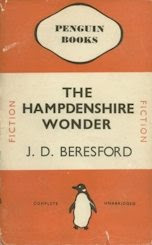 The Book of the Week is Night Bus by Samuel Hopkins Adams (1871-1958), cover art by Sandor Klein. Night Bus was the basis for the 1934 Frank Capra film It Happened One Night, starring Clark Gable and Claudette Colbert. It Happened One Night was the first movie ever to sweep the Oscars for Best Picture, Best Director, Best Actor, and Best Actress. (Only two other movies have done it since - can you name them?)
The Book of the Week is Night Bus by Samuel Hopkins Adams (1871-1958), cover art by Sandor Klein. Night Bus was the basis for the 1934 Frank Capra film It Happened One Night, starring Clark Gable and Claudette Colbert. It Happened One Night was the first movie ever to sweep the Oscars for Best Picture, Best Director, Best Actor, and Best Actress. (Only two other movies have done it since - can you name them?) In addition to writing fiction such as Night Bus, Samuel Hopkins Adams was a muckraking journalist, whose series of articles exposing fraudulent medicines was instrumental in bringing about the Pure Food and Drugs Act of 1906. (Which I discovered when I googled him to write this - even I am learning interesting things from these Book of the Week entries.)
Originally published in Cosmopolitan magazine (a "slick" magazine even then, not one of the pulps), Night Bus was reprinted as #3 in Dell Books' series of 10¢ books published in 1951. These books were undersized and contained a single short story, reproducing the "dime novel" format that was successful in the Nineteenth Century but had completely disappeared a generation before the Dell 10¢ books, or "Dell Dimers," came along. The Dell Dimers were not a commercial success and disappeared after just 36 titles. These unusual books are now quite hard to find, and a few are very rare. Among the most rare Dell Dimers is next week's Book of the Week, the only science fiction title in the series.




